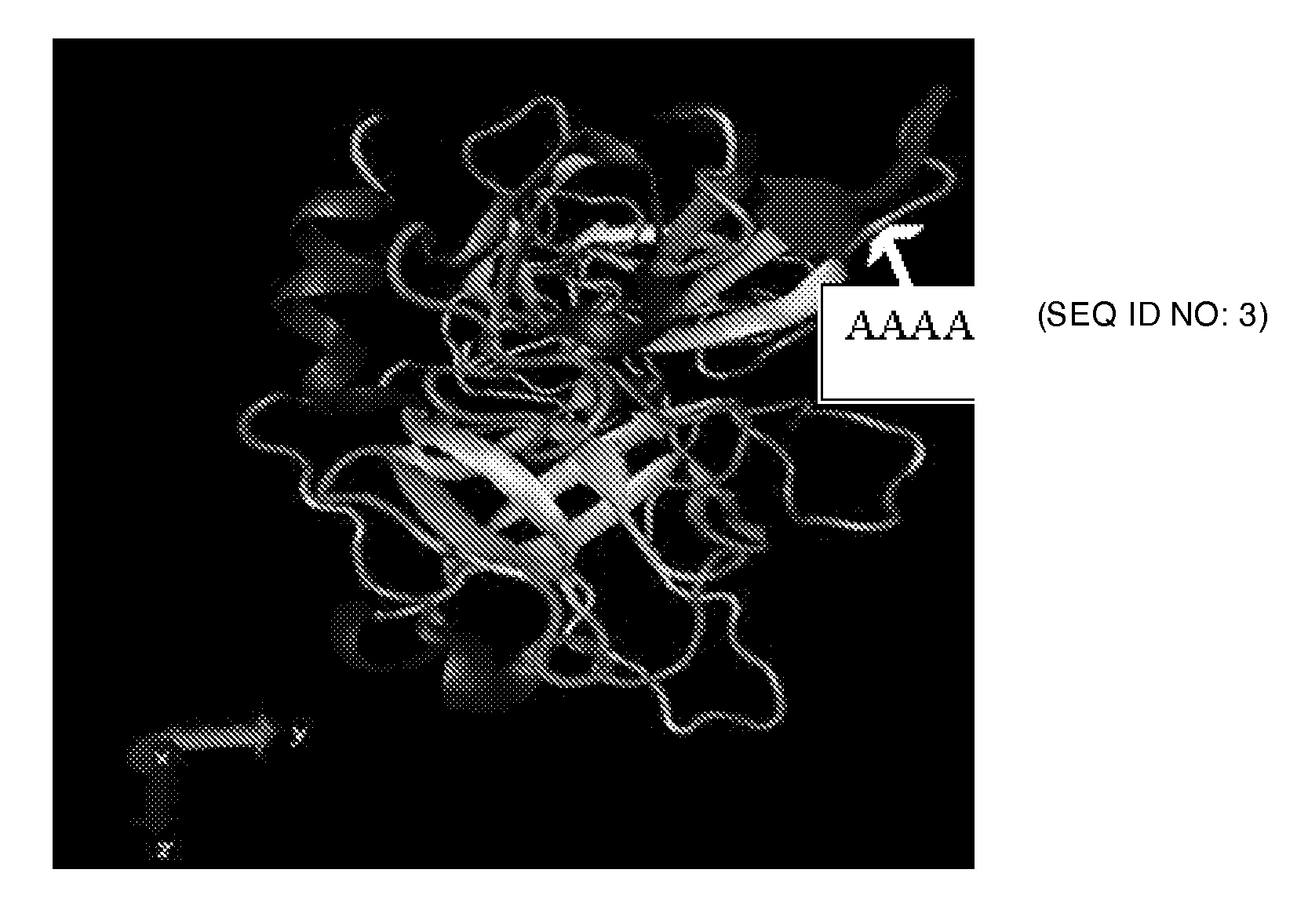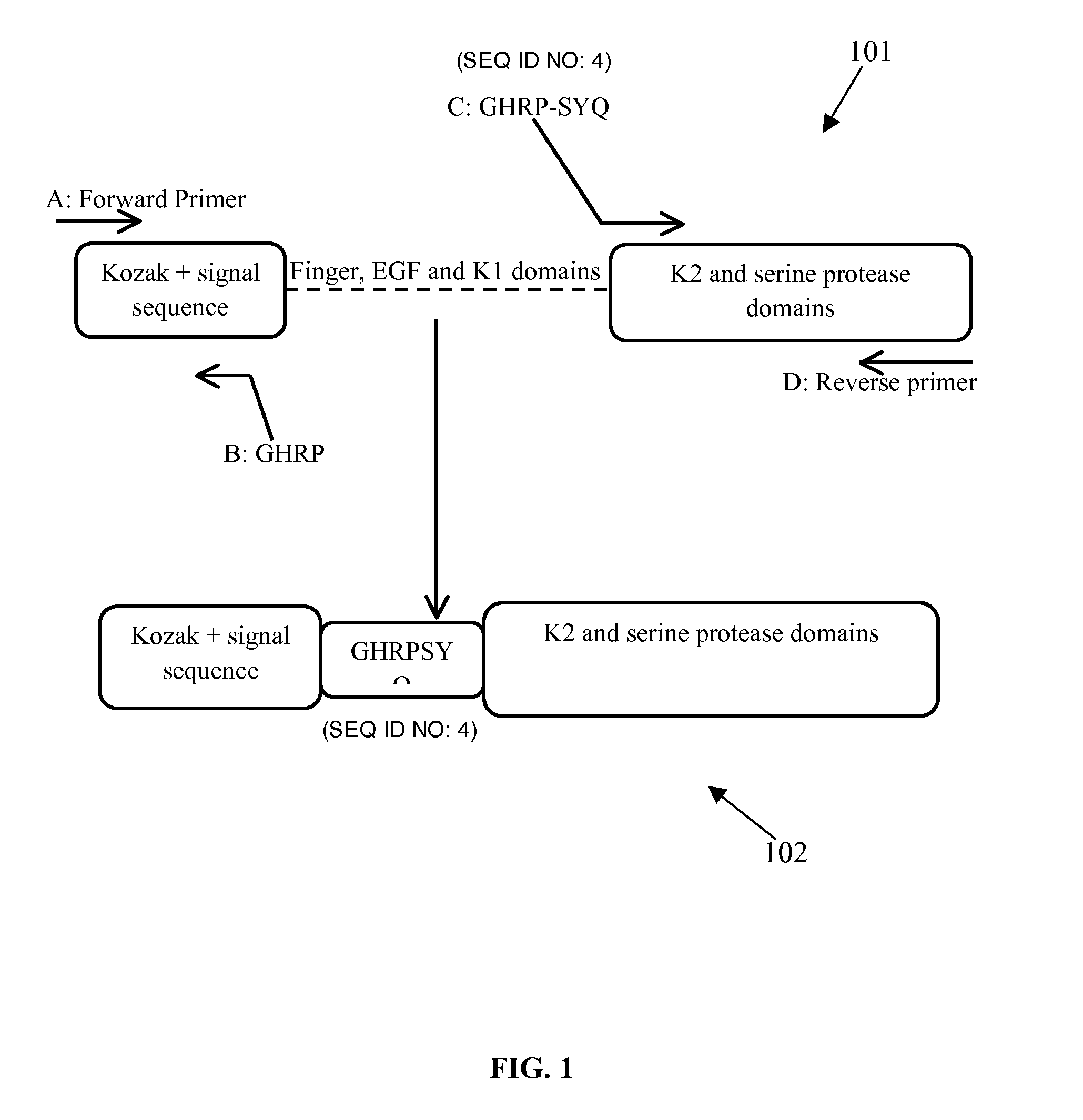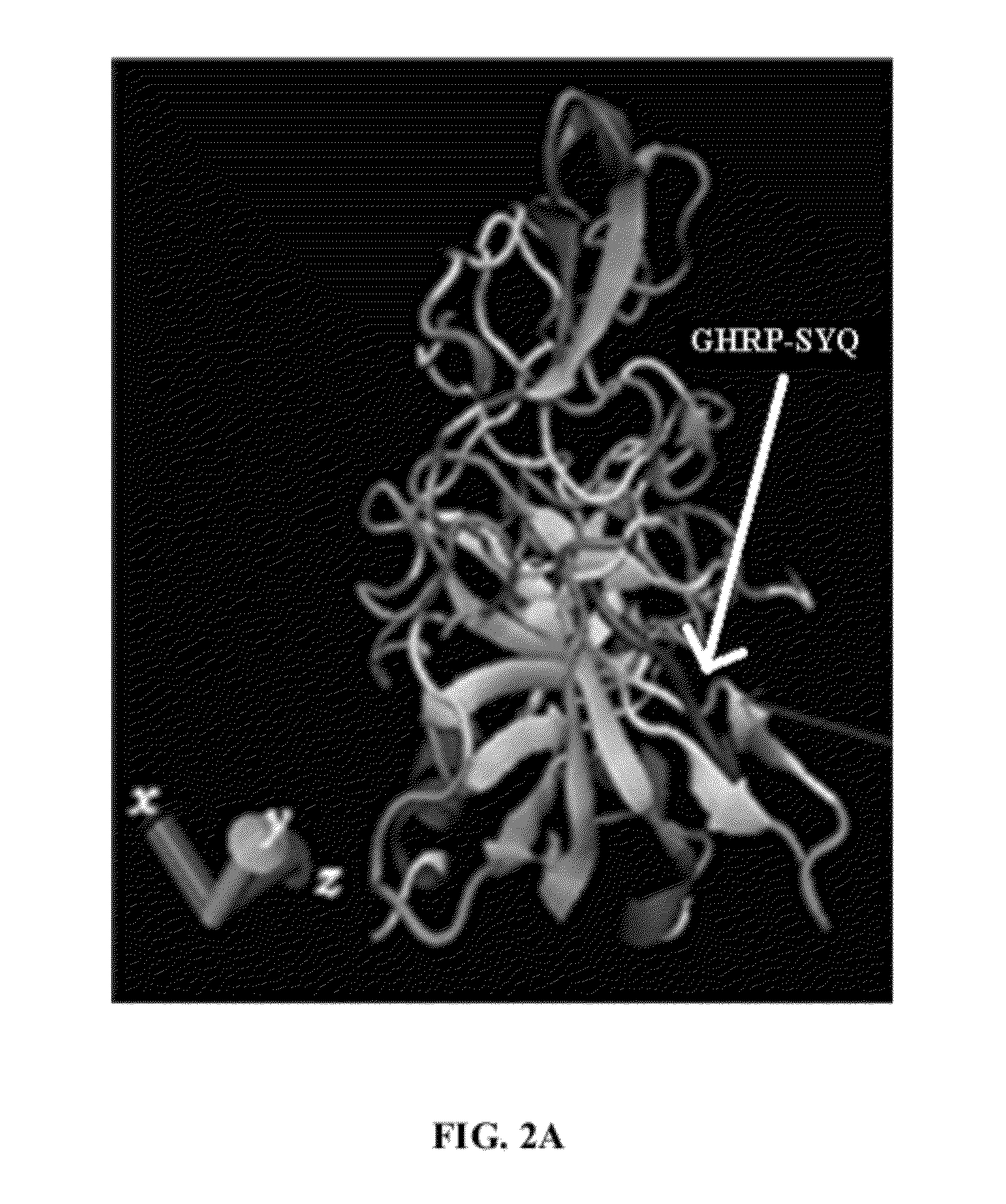[0020]The various embodiments herein provide a novel truncated mutant variant of tissue
plasminogen activator or t-pa wherein the first three domains of native t-PA are deleted, a chimeric tertapeptide Gly-His-Arg-Pro (GHRP) is added and the KHRR 128-131 amino acids are substituted with AAAA amino acids. The chimeric tertapeptide Gly-His-Arg-Pro (GHRP) is added to the upstream of kringle 1 and
serine protease domain (K2S domain) of the truncated mutant variant of t-pa. The mutant variant in the embodiments herein has an increased
half life and a high
fibrin affinity. The increased
half life is due to the deletion of the first three domains of the full length t-pa. The domains deleted are Finger domain (F),
growth factor domain (EGF) and kringle 1 domain (K1) of the native full length t-pa. The addition of the chimeric tertapeptide Gly-His-Arg-Pro (GHRP) is responsible for the high
fibrin affinity. The chimeric tertapeptide Gly-His-Arg-Pro (GHRP) added upstream of K2S domain compensates for the diminished fibrin affinity due to F domain deletion.
[0021]The
specific activity of the novel truncated mutant variant, in the embodiments herein, is 570 IU / μg and an 85% of
residual activity after inhibition by rPAI-1. The
new variant in the embodiments herein, as the first PAI-1 resistant truncated t-PA, offers more advantages in clinical conditions in which high PAI-1 levels makes the thrombolytic
system prone to re-
occlusion.
[0023]According to an embodiment herein, a method for preparing a chimeric truncated and mutant variant of t-pa comprises deleting first three domains of a native t-pa, adding a chimeric tetrapeptide and substituting amino acids KHRR with amino acids AAAA at position 128-131
amino acid of the native t-pa. The first three deleted domains of the native t-pa are a Finger domain (F), a
Growth Factor domain (EGF) and a Kringle 1 domain (K1). The chimeric tetrapeptide is Gly-His-Arg-Pro (GHRP) and is added at a position of 36 to 39
amino acid of the mutant variant. The mutant variant is produced by using a Splicing by Overlap Extension PCR (SOEing-PCR) method. The chimeric tetrapeptide (GHRP) is added upstream to a kringle 2 domain and a
serine protease domain (i.e. K2S domain) of the native t-pa. The chimeric tetrapeptide compensates for diminished fibrin affinity due to F domain deletion from a native t-pa. The mutant variant has 394 amino acids. The chimeric tetrapeptide (GHRP) has a high fibrin affinity. The mutant variant has a
specific activity of 570 IU / μg. The mutant variant has a
residual activity of 85% after inhibition by
plasminogen activator inhibitor-1.
[0025]According to one embodiment herein, the chimeric truncated and mutant variant of a tissue plasminogen activator (t-pa) comprises a
signal sequence domain, followed by a chimeric tetrapeptide, followed by a
tripeptide, followed by a kringle 2 domain, followed by a
serine protease domain and a substituted amino acids at position 128-131 with AAAA amino acids. The chimeric tetrapeptide is Gly-His-Arg-Pro (GHRP). The chimeric tetrapeptide is at a position of 36 to 39 amino acid of the mutant variant. The tripeptide is Ser-Tyr-Glu (SYQ). The mutant variant in the embodiments herein is resistant to tissue plasminogen inhibitor-1. The mutant variant has a total of 394 amino acids. The mutant variant is produced by using Splicing by Overlap Extension PCR (SOEing-PCR) methodology. The first three domains of a native t-pa are deleted and amino acids KHRR at 128-131 position of the native t-pa are substituted with AAAA amino acids to obtain the mutant variant. The deleted domains are a Finger domain (F), a
growth factor domain (EGF) and a Kringle 1 domain. The chimeric tetrapeptide (GHRP) is added upstream to the kringle 2 domain and the
serine protease domain (i.e. K2S domain). The chimeric tetrapeptide (GHRP) is situated on the N-terminus. The chimeric tetrapeptide (GHRP) has a high fibrin affinity. The
specific activity of the mutant variant is 570 IU / μg. The arrangement of the tripeptide, the kringle 2 and the
serine protease domains (SYQ-K2S) is responsible for the
serine protease activity. The chimeric tetrapeptide compensates for diminished fibrin affinity due to F domain deletion from a native t-pa. The truncated mutant form shows a
residual activity of 85% after inhibition by
Plasminogen activator inhibitor-1. The mutant variant in the embodiments herein, has an increased half-life.
 Login to View More
Login to View More 


